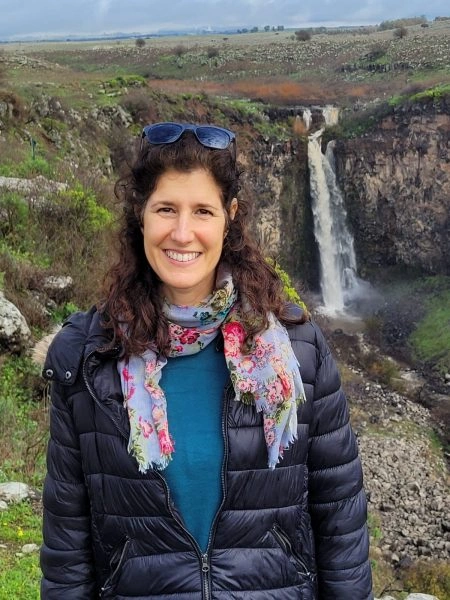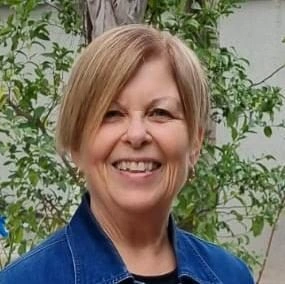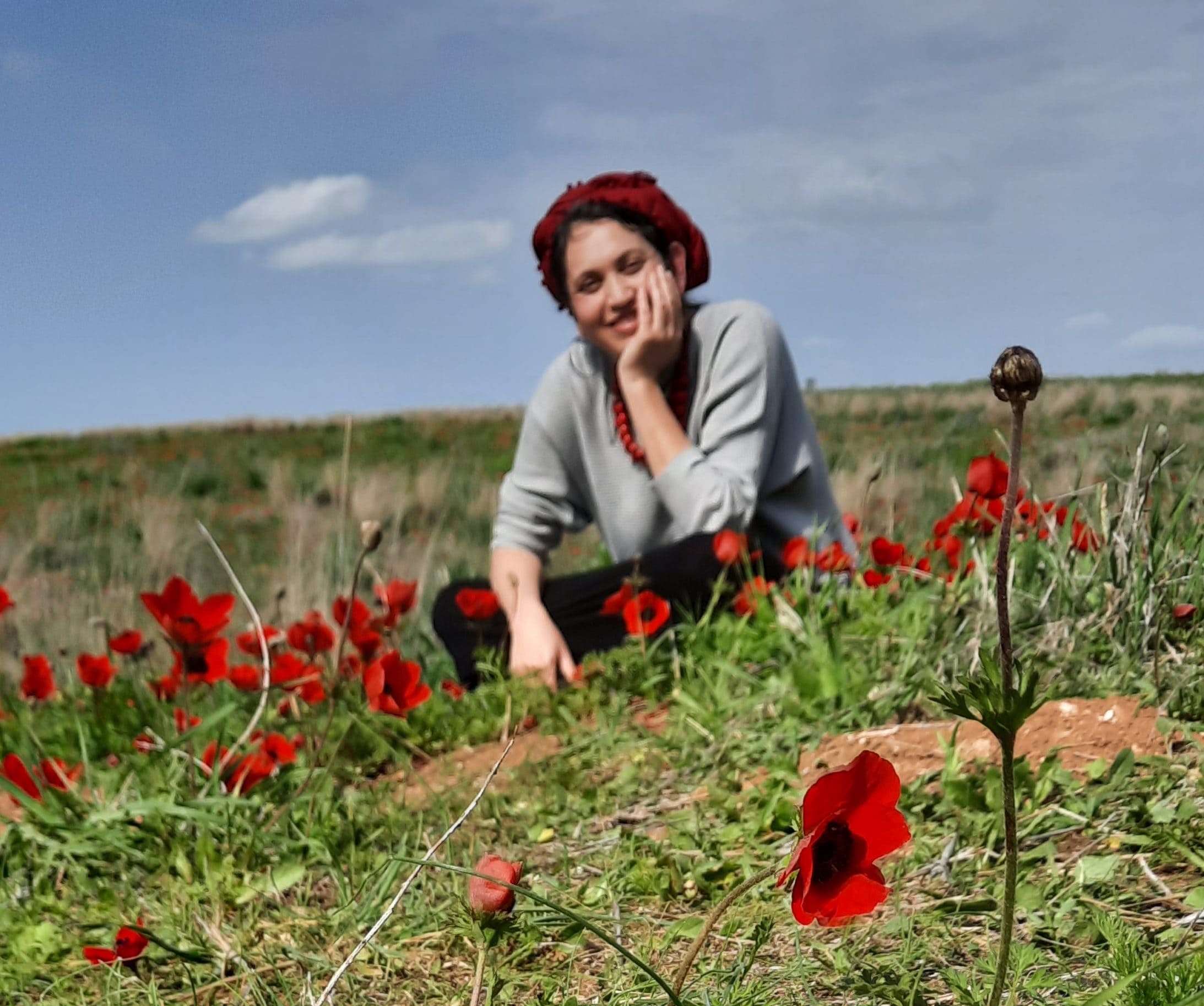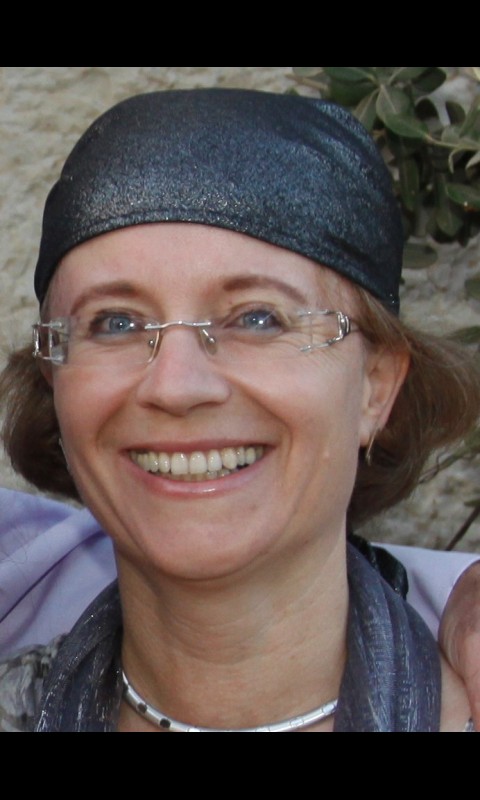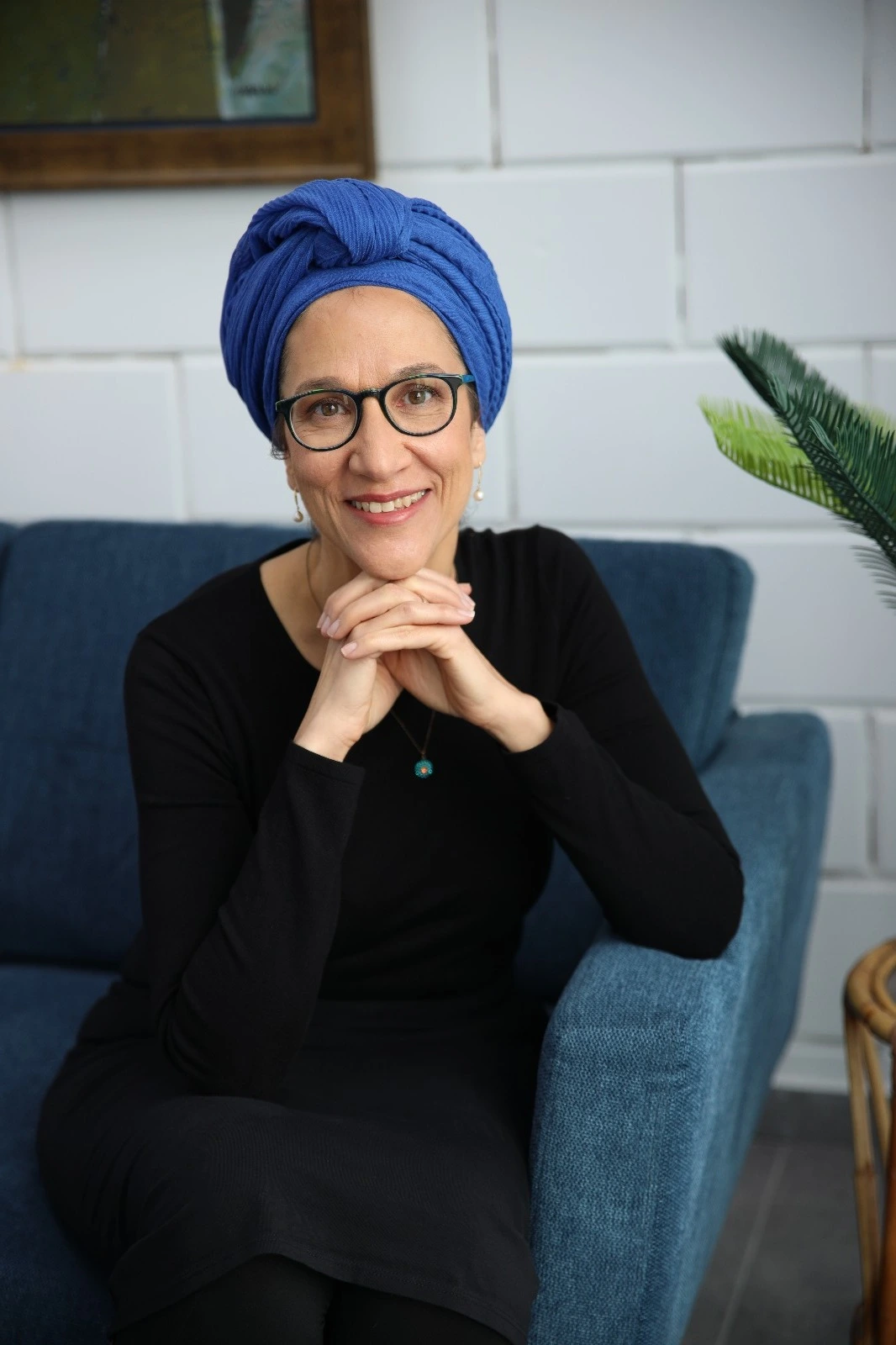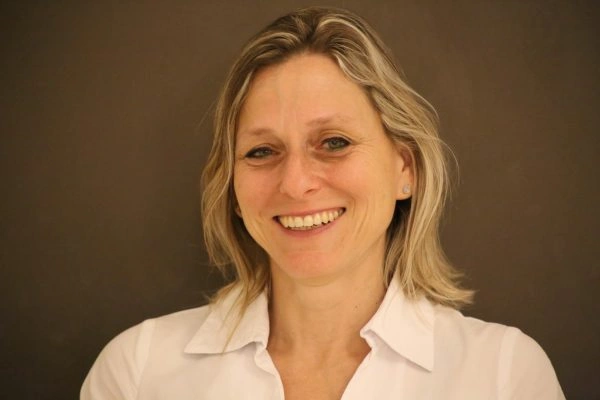באיזה מקרה יש מחלוקת בין בני ארץ ישראל לבבל בעניין חלב? יש כמה חילוקי דעות לגבי כל מיני פסקי הלכה בעניין טריפות וגם בעניין אחד של אבלות. אם יש נקב ולא יודעים אם זה קרה לפני או אחרי שחיטה, איך בודקים? איפה הכרס הפנימי שעליו מדובר במשנה?
רוצים להקדיש למידה? התחל כאן:
העמקה
רוצה להבין מה באמת קורה מתחת לפני השטח של הסוגיה?
שיעורים, פודקאסטים והרחבות של מיטב המורות שלנו יפתחו לך עוד זוויות וכיווני חשיבה.
חדשה בלימוד הגמרא?
זה הדף הראשון שלך? איזו התרגשות עצומה! יש לנו בדיוק את התכנים והכלים שיעזרו לך לעשות את הצעדים הראשונים ללמידה בקצב וברמה שלך, כך תוכלי להרגיש בנוח גם בתוך הסוגיות המורכבות ומאתגרות.
פסיפס הלומדות שלנו
גלי את קהילת הלומדות שלנו, מגוון נשים, רקעים וסיפורים. כולן חלק מתנועה ומסע מרגש ועוצמתי.
חולין נ
ולדידן מיסתם נמי לא סתים
and to us, the residents of Babylonia, not only is it forbidden but it also does not seal a perforation? It cannot be that this fat is forbidden by Torah law if they permit it for consumption. Even though we are stringent with regard to its consumption, we may still maintain that it effectively seals a perforation.
דאקשתא כולי עלמא לא פליגי דאסיר כי פליגי דאייתרא
The Gemara explains: The abomasum is shaped like a bow. The side facing outward is curved like the bow itself, while the side facing inward is flat and straight like the bowstring. With regard to the fat that is on the bow, everyone agrees, even the residents of Eretz Yisrael, that it is forbidden for consumption. This fat, then, is the ḥimtza, which does not seal a perforation according to Rav Naḥman. When they disagree, it is with regard to the fat that is on the bowstring. The residents of Eretz Yisrael permit it for consumption, while those of Babylonia prohibit it. According to Rav Naḥman, the residents of Babylonia should concede that it is nevertheless an effective seal. This, then, is the bar ḥimtza.
איכא דאמרי דאייתרא כולי עלמא לא פליגי דשרי כי פליגי דאקשתא
There are those who say that with regard to the fat that is on the bowstring, everyone agrees that it is permitted. This, then, is the bar ḥimtza. When they disagree, it is with regard to the fat that is on the bow. The residents of Eretz Yisrael permit it, but the residents of Babylonia prohibit it. This, then, is the ḥimtza.
כי הא דאמר רב אויא אמר רבי אמי מקמצין וכן אמר רבי ינאי משום זקן אחד מקמצין אמר רב אויא הוה קאימנא קמיה דרבי אמי קמצו והבו ליה ואכל
The Gemara adds: When it was stated that only the residents of Eretz Yisrael permit the fat on the bowstring for consumption, this means that they would eat it in a manner like that which Rav Avya says that Rabbi Ami says: One takes a handful of the fat that lies above the fat on the bowstring, since this is the fat prohibited by the verse: “And all the fat that is upon the innards” (Leviticus 3:3), and the rest is permitted for consumption. And so says Rabbi Yannai, also a resident of Eretz Yisrael, in the name of a certain elder: One takes a handful. Rav Avya said: I was standing before Rabbi Ami. The people there took a handful of the fat on the bowstring and gave him the remaining fat, and he ate from it.
שמעיה דרבי חנינא הוה קאי קמיה דרבי חנינא א”ל קמוץ הב לי דאיכול חזייה דהוי קמחסם אמר ליה בבלאה את גום שדי
The Gemara relates: The attendant of Rabbi Ḥanina was standing before Rabbi Ḥanina, a resident of Eretz Yisrael. Rabbi Ḥanina said to him: Take off a handful from that fat on the bowstring and give me the rest so that I will eat from it. Rabbi Ḥanina saw that the attendant was hesitating, so he said to him: You are a Babylonian and usually consider all of this fat forbidden. If so, cut off all the fat and throw it away.
תניא רשב”ג אומר בני מעיין שניקבו וליחה סותמתן כשרה מאי ליחה אמר רב כהנא שירקא דמעייא דנפיק אגב דוחקא
§ The mishna states that if the small intestines are perforated, the animal is a tereifa. With regard to this, it is taught in a baraita: Rabban Shimon ben Gamliel says: If the intestines were perforated but mucus seals the perforated intestines, the animal is kosher. The Gemara asks: What is this mucus? Rav Kahana said: It is the mucus of the intestines that comes out under pressure, when one scrapes with a knife.
גמירי חבריא דרבי אבא מרבי אבא ומנו רבי זירא ואמרי לה חבריא דרבי זירא מר’ זירא ומנו רבי אבא (אמר רבי אבא) בריה דרבי חייא בר אבא הכי אמר (רבי חייא בר אבא אמר) רבי יוחנן הלכה כרשב”ג בטרפה והלכה כרבי שמעון באבל
The Gemara relates: The colleagues of Rabbi Abba learned a tradition from Rabbi Abba. And who are they? The phrase: Colleagues of Rabbi Abba, is referring to Rabbi Zeira. And some say the colleagues of Rabbi Zeira learned it from Rabbi Zeira. And who are they? Rabbi Abba. This is the tradition: Rabbi Abba, son of Rabbi Ḥiyya bar Abba, said that this is what Rabbi Ḥiyya bar Abba says that Rabbi Yoḥanan says: The halakha is in accordance with the opinion of Rabban Shimon ben Gamliel with regard to a tereifa, and the halakha is in accordance with the opinion of Rabbi Shimon with regard to the halakhot of mourning.
הלכה כרשב”ג בטרפה הא דאמרן כרבי שמעון באבל מאי היא דתנן כל שלשה ימים הראשונים בא ממקום קרוב מונה עמהן
The Gemara elaborates: The halakha is in accordance with the opinion of Rabban Shimon ben Gamliel with regard to a tereifa; this is the halakha that we stated above, that mucus forms an effective seal in the intestines. The halakha is in accordance with the opinion of Rabbi Shimon with regard to mourning; what is this halakha? As we learned in a baraita: If one learns of the death of an immediate relative after other relatives have already begun their period of mourning, the halakha is as follows: During the entire first three days of mourning, if a mourner comes to the house of mourning from a nearby place, he counts his days of mourning with the other mourners and completes his mourning with them.
ממקום רחוק מונה לעצמו מכאן ואילך אפילו בא ממקום קרוב מונה לעצמו רבי שמעון אומר אפילו ביום השביעי בא ממקום קרוב מונה עמהן
The baraita continues: If he came from a distant place, he counts seven days on his own from the time that he was informed of the death. From this point forward, i.e., after the first three days, even if he comes from a nearby place, he counts seven days on his own. Rabbi Shimon says: Even on the seventh day, if he comes from a nearby place, he counts and completes his mourning with the other mourners.
אמר מאן דהוא איזכי ואיסק ואגמרה לשמעתא מפומיה דמרה כי סליק אשכחיה לרבי אבא בריה דר’ חייא בר אבא א”ל אמר מר הלכה כרשב”ג בטרפה א”ל הא אין הלכה אמרי
Someone whose name was not given said: May I merit to go up to Eretz Yisrael and learn this halakha from the mouth of its Master. When he went up from Babylonia to Eretz Yisrael, he found Rabbi Abba, son of Rabbi Ḥiyya bar Abba, and said to him: Is it true that the Master said that the halakha is in accordance with the opinion of Rabban Shimon ben Gamliel with regard to a tereifa? Rabbi Abba said to him: This is not true. Rather, I said just the opposite, that the halakha is not in accordance with Rabban Shimon ben Gamliel, and even if mucus seals the perforation of the intestine, the animal is a tereifa.
כרבי שמעון באבל מאי א”ל פלוגתא נינהו דאיתמר רב חסדא אמר הלכה וכן אמר רבי יוחנן הלכה ורב נחמן אמר אין הלכה
The anonymous man asked Rabbi Abba again: What about the other ruling reported in your name, that the halakha is in accordance with the opinion of Rabbi Shimon with regard to mourning; is this accurate? Rabbi Abba said to him: There are conflicting opinions with regard to this matter, as it was stated that Rav Ḥisda says that the halakha is in accordance with the opinion of Rabbi Shimon, and so says Rabbi Yoḥanan: That is the halakha. But Rav Naḥman says: That is not the halakha.
ואין הלכה כרבן שמעון בן גמליאל בטרפה והלכה כרבי שמעון באבל דאמר שמואל הלכה כדברי המיקל באבל
The Gemara concludes: And the halakha is not in accordance with the opinion of Rabban Shimon ben Gamliel with regard to a tereifa, and the halakha is in accordance with the opinion of Rabbi Shimon with regard to mourning, in accordance with the statement of Shmuel, who says: The halakha is in accordance with the statement of the more lenient authority in matters relating to mourning.
אמר רב שימי בר חייא מקיפים בבני מעיים
§ Rav Shimi bar Ḥiyya says: One may compare perforations in the intestines. If one is unsure whether a perforation occurred before or after slaughter, one may make an additional perforation and compare the two. If their appearance is similar, one may conclude that the perforation occurred after slaughter, and the animal is kosher.
הנהו בני מעיים דאתו לקמיה דרבא אקפינהו ולא אידמו אתא רב משרשיא בריה ממשמש בהו ואידמו אמר ליה מנא לך הא אמר ליה כמה ידי ממשמשו בהני מקמי דליתי לקמיה דמר אמר ליה חכים ברי בטרפות כרבי יוחנן
The Gemara relates: There were certain perforated intestines that came before Rava. Rava made other perforations and compared them, but they were not similar. Rav Mesharshiyya, his son, came and rubbed the new perforations, and they were similar. Rav Mesharshiyya therefore deemed the animal kosher. Rava said to him: From where did you know to do this? Rav Mesharshiyya said to him: I reasoned: How many hands rubbed these earlier perforations before they came before the Master? Therefore, I thought that if I handled the new ones, perhaps they would look similar. Rava said to him: My son is as wise in matters of tereifot as Rabbi Yoḥanan.
רבי יוחנן ורבי אלעזר דאמרי תרוייהו מקיפים בריאה אמר רבא לא אמרן אלא באותה ערוגה אבל מערוגה לערוגה לא והלכתא אפילו מערוגה לערוגה מדקה לדקה ומגסה לגסה אבל לא מגסה לדקה ולא מדקה לגסה
Similarly, Rabbi Yoḥanan and Rabbi Elazar both say: One may compare perforations in the lung to determine whether they occurred after slaughter. Rava said: We said this only when the two perforations are on the same side of the lungs. But one may not compare perforations from one side to the other side. The Gemara rules: And the halakha is: One may compare even from one side to the other side, and even from a small animal to another small animal, or from a large animal to another large animal, but not from a large animal to a small animal, and not from a small animal to a large animal.
אביי ורבא דאמרי תרוייהו מקיפין בקנה אמר רב פפא לא אמרן אלא באותה חוליא אבל מחוליא לחוליא לא והלכתא אפילו מחוליא לחוליא ומבר חוליא לבר חוליא אבל לא מחוליא לבר חוליא ולא מבר חוליא לחוליא
Similarly, Abaye and Rava both say: One may compare severed or perforated areas in the windpipe. Rav Pappa said: We said this only when the two areas are in the same segment of the windpipe. But one may not compare from one segment to another segment. The Gemara rules: And the halakha is: One may even compare from one segment to another segment, and from one subsegment, i.e., a thin segment between the main segments, to another subsegment, but not from a segment to a subsegment, and not from a subsegment to a segment.
אמר זעירי חלחולת שניקבה כשרה הואיל ויריכים מעמידות אותה וכמה אמר רבי אילעי אמר רבי יוחנן מקום הדבק ברובו שלא במקום הדבק במשהו
§ Ze’eiri says: If the rectum was perforated, the animal is kosher, since the hips hold it up and seal the perforation. And to how much of the rectum does this apply? Rabbi Ilai says that Rabbi Yoḥanan says: If the rectum was perforated in the place where it is attached to the hips, even if it was perforated in its majority, the animal is kosher. If the perforation was not in the place where it is attached to the hips, the animal is a tereifa if it was perforated in any amount.
אמרוה רבנן קמיה דרבא משמיה דרב נחמן אמר לאו מי אמינא לכו לא תתלו ביה
The Sages said this halakha before Rava in the name of Rav Naḥman. Rava said to them: Have I not told you not to hang on Rav Naḥman
בוקי סריקי הכי אמר רב נחמן מקום הדבק אפילו ניטל כולו כשר והוא שנשתייר בו כדי תפיסה וכמה אמר אביי כמלא בטדא בתורא:
empty bottles, i.e., not to falsely attribute statements to him? So said Rav Naḥman: With regard to the place that the rectum is attached to the hips, even if all of it was removed, the animal is kosher. And this is the halakha only where sufficient space remains of it for a hand to grip. The Gemara asks: And how much is considered sufficient to grip? Abaye said: The width of a finger. This measure is sufficient even in the case of a large bull.
הכרס הפנימי: אמר רב יהודה אמר רב העיד נתן בר שילא ריש טבחיא דצפורי לפני רבי משום רבי נתן אי זו היא כרס הפנימי סניא דיבי וכן אמר רבי יהושע בן קרחה סניא דיבי רבי ישמעאל אמר איסתומכא דכרסא
§ The mishna states that if the internal rumen was perforated or most of the external rumen was torn, the animal is a tereifa. With regard to this, Rav Yehuda says that Rav says: Natan bar Sheila, chief butcher of Tzippori, testified before Rabbi Yehuda HaNasi in the name of Rabbi Natan: Which is the internal rumen? It is the cecum. And so said Rabbi Yehoshua ben Korḥa: It is the cecum. Rabbi Yishmael said: It is the opening [istumka] of the rumen.
רב אסי אמר רבי יוחנן מקום צר יש בכרס ואיני יודע איזהו אמר רב נחמן בר יצחק נפל כרסא בבירא אמר רב אחא בר רב עוא אמר רב אסי מן המיצר ולמטה
Rav Asi says that Rabbi Yoḥanan says: There is a narrow place in the rumen, and this is the internal rumen; all the rest is the external rumen. But I do not know which area is this narrow place. Rav Naḥman bar Yitzḥak said: The rumen has fallen in a pit, i.e., since it is unknown which area is considered the narrow place, a perforation in any part of the rumen renders the animal a tereifa. Rav Aḥa bar Rav Ava says that Rav Asi says: The inner rumen extends from the narrow place, where the rumen begins to narrow as it approaches the gullet, and downward toward the gullet when the animal is suspended by its legs.
רבי יעקב בר נחמני אמר שמואל מקום שאין בו מילת רבי אבינא אמר גניבא משמיה דרב טפח בוושט סמוך לכרס זו היא כרס הפנימית
Rabbi Ya’akov bar Naḥmani says in the name of Shmuel: The internal rumen is the place in the rumen that has no wool, i.e., downy projections on the inside of the rumen. Rabbi Avina says in the name of Geneiva, who said in the name of Rav: The handbreadth in the gullet adjacent to the rumen, this is the internal rumen.
אמרי במערבא משמיה דרבי יוסי בר חנינא כל הכרס כולו זו היא כרס הפנימית ואיזהו כרס החיצון בשר החופה את רוב הכרס רבה בר רב הונא אמר מפרעתה מאי מפרעתה אמר רב אויא היכא דפרעי טבחי
In the West, Eretz Yisrael, they said in the name of Rabbi Yosei bar Ḥanina: The entire rumen is the internal rumen. And if so, which is the external rumen? It is the flesh that envelops the majority of the rumen on the underside of the animal. Rabba bar Rav Huna says: The internal rumen is the mafrata. The Gemara asks: What is the mafrata? Rav Avya said: It is the place that the butcher exposes when he opens up the animal, i.e., the underside of the stomach.
בנהרדעא עבדי כרבה בר רב הונא א”ל רב אשי לאמימר כל הני שמעתתא מאי א”ל כולהו שייכן בדרבה בר רב הונא
The Gemara recounts: In Neharde’a, they practiced in accordance with the opinion of Rabba bar Rav Huna. Rav Ashi said to Ameimar, one of the Sages of Neharde’a: What about all these other statements, that the internal rumen is another part of the rumen? Ameimar said to him: They are all included in the definition of the rumen according to Rabba bar Rav Huna. The cecum, the opening of the stomach, and the place with no wool all face the underside of the stomach, i.e., the mafrata.
ודרב אסי א”ר יוחנן מאי א”ל כבר פירשה רב אחא בר עוא ודרבי אבינא ודבני מערבא מאי א”ל הני ודאי פליגי:
Rav Ashi replied: And what about the opinion that Rav Asi says in the name of Rabbi Yoḥanan, that the internal rumen is an unknown narrow area? Shouldn’t the entire rumen be treated as the internal rumen? Ameimar said to him: Rav Aḥa bar Ava already explained that it is the area extending from the narrow place until the gullet. This area is also included in the mafrata. Rav Ashi asked further: And what of the opinion of Rabbi Avina, that the internal rumen is the handbreadth near the gullet, and of the residents of the West, Eretz Yisrael, that it is the entire rumen? Ameimar said to him: These opinions certainly disagree with that of Rabba bar Rav Huna, but we do not follow them.
רבי יהודה אומר בגדולה כו’: אמר רבי בנימין בר יפת אר”א לא גדולה גדולה ממש ולא קטנה קטנה ממש אלא כל שנקרע בה טפח ולא הוי רובא זו היא ששנינו בגדולה טפח רובא ולא הוי טפח זו היא ששנינו בקטנה ברובא
§ The mishna states: Rabbi Yehuda says: With regard to a tear in the external rumen, for a large animal, a tear of one handbreadth renders it a tereifa, while for a small animal, it is a tereifa only if most of it was torn. Rabbi Binyamin bar Yefet says that Rabbi Elazar says: The word: Large, is not referring literally to a large animal, and the word: Small, is not referring literally to a small animal. Rather, concerning any animal large enough that its external rumen can be torn one handbreadth and this does not constitute most of it, this is what we learned: For a large animal, a tear of one handbreadth renders it a tereifa. And concerning any animal small enough that most of its external rumen can be torn and this does not constitute one handbreadth, this is what we learned: For a small animal, it is a tereifa only if most of it was torn. In other words, any external rumen torn either one handbreadth or in its majority renders the animal a tereifa.
רובא ולא הוי טפח פשיטא לא צריכא דהויא טפח במשהו מהו דתימא עד דמיקרע בה טפח לא הוי טרפה קמ”ל
The Gemara asks: If most of the external rumen is torn but it does not constitute a handbreadth, isn’t it obvious that the animal is rendered a tereifa? There is a principle that the majority of an entity is considered like all of it. The Gemara responds: No, it is necessary to teach this for a case where the tear would constitute a handbreadth with any amount more than a majority, i.e., the external rumen is slightly smaller than two handbreadths. Lest you say that in such a case, the animal is not a tereifa until a handbreadth of it is torn, this halakha teaches us that this is not so. Rather, if the majority of the rumen is torn, the animal is a tereifa, even if this constitutes less than a handbreadth.
אמר גניבא אמר רבי אסי נקדרה כסלע טרפה שאם תמתח תעמוד על הטפח אמר רבי חייא בר אבא לדידי מפרשא לי מיניה דגניבא אמברא דנהרדעא כסלע כשרה יתר מכסלע טרפה וכמה יתר מכסלע אמר רב יוסף כגון דעיילן תלת קשייתא בציפא בדוחקא בלא ציפא ברווחא:
Geneiva says that Rabbi Asi says: If a round hole was bored through the external rumen as large as a sela coin, the animal is a tereifa, since if a hole of such size will be stretched, it will reach the length of a handbreadth. Rabbi Ḥiyya bar Abba said: This matter was explained to me personally by Geneiva himself, when we were on the ferry of Neharde’a: If the hole is exactly as large as a sela, the animal is kosher. If the size of the hole is greater than a sela, it is a tereifa. The Gemara asks: And how much is considered greater than a sela? Rav Yosef said: For example, if three date pits covered in remains of the date can fit through the hole with difficulty, or if, without being covered in any remains, they can fit comfortably, this is considered a hole larger than a sela.
המסס ובית הכוסות: תנו רבנן מחט שנמצאת בעובי בית הכוסות מצד אחד כשרה משני צדדים טרפה נמצא עליה קורט דם
§ The mishna states: An animal is a tereifa if the omasum or the reticulum was perforated to the outside, i.e., to the abdominal cavity. With regard to this, the Sages taught: In the case of a needle that is found in the thickness of the reticulum, if it pierced the wall from only one side, the animal is kosher. If it pierced the wall from both sides, i.e., the needle completely pierced the wall of the stomach, it is a tereifa. But even if it protrudes from both sides, it is not always a tereifa, and it may be inspected further: If a drop of congealed blood is found on top of the needle,




















